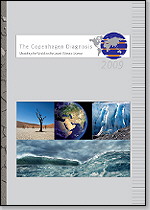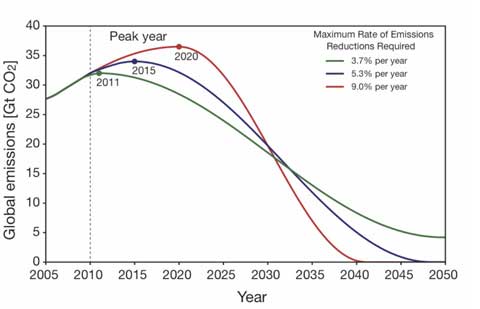 The Copenhagen climate conference (COP15) opens its doors in a little under two weeks. To update participants on the science of climate a new assessment report, The Copenhagen Diagnosis, was released yesterday, and it makes grim reading. Designed to inform “a target readership of policy-makers, stakeholders, the media and the broader public” about the evidence that’s emerged since the 2005 cut-off for the IPCC’s Fourth Report, it is especially strong on the accumulating signs of climate change as it happens.
The Copenhagen climate conference (COP15) opens its doors in a little under two weeks. To update participants on the science of climate a new assessment report, The Copenhagen Diagnosis, was released yesterday, and it makes grim reading. Designed to inform “a target readership of policy-makers, stakeholders, the media and the broader public” about the evidence that’s emerged since the 2005 cut-off for the IPCC’s Fourth Report, it is especially strong on the accumulating signs of climate change as it happens.
Evidence of melting of the Greenland and Antarctic ice sheets supports a revision of the expected sea level rise by the end of the century: it “may well exceed” a metre. The rapid sea ice loss in the Arctic in recent years highlights the risks of methane releases from permafrost, but the most direct message is that with global carbon emissions surging up to and beyond the highest of the IPCC’s scenarios, and with pretty strict limits on the amount of carbon we can add to the atmosphere and stay under a 2ºC rise, we need to start cutting emissions soon.
Here’s what the emissions growth looks like:

And here’s what we need to do to stay under 2ºC:

It’s a simple enough message. The longer we leave it before starting to cut emissions, the steeper the cuts will need to be. And there’s an obvious corollary: steep cuts will be more expensive. Inaction now means more cost in the future. Where does that leave any government promising to “balance the economy and the environment”?
Below the fold: the full executive summary.
Continue reading “Marvellous distempered: the Copenhagen diagnosis”

 The
The  Active methane plumes over the West Spitsbergen shelf discovered
Active methane plumes over the West Spitsbergen shelf discovered  This week climate minister Nick Smith and international negotiator Tim Groser start their
This week climate minister Nick Smith and international negotiator Tim Groser start their